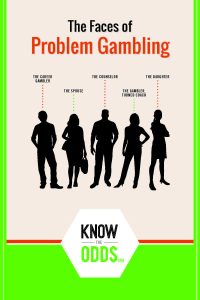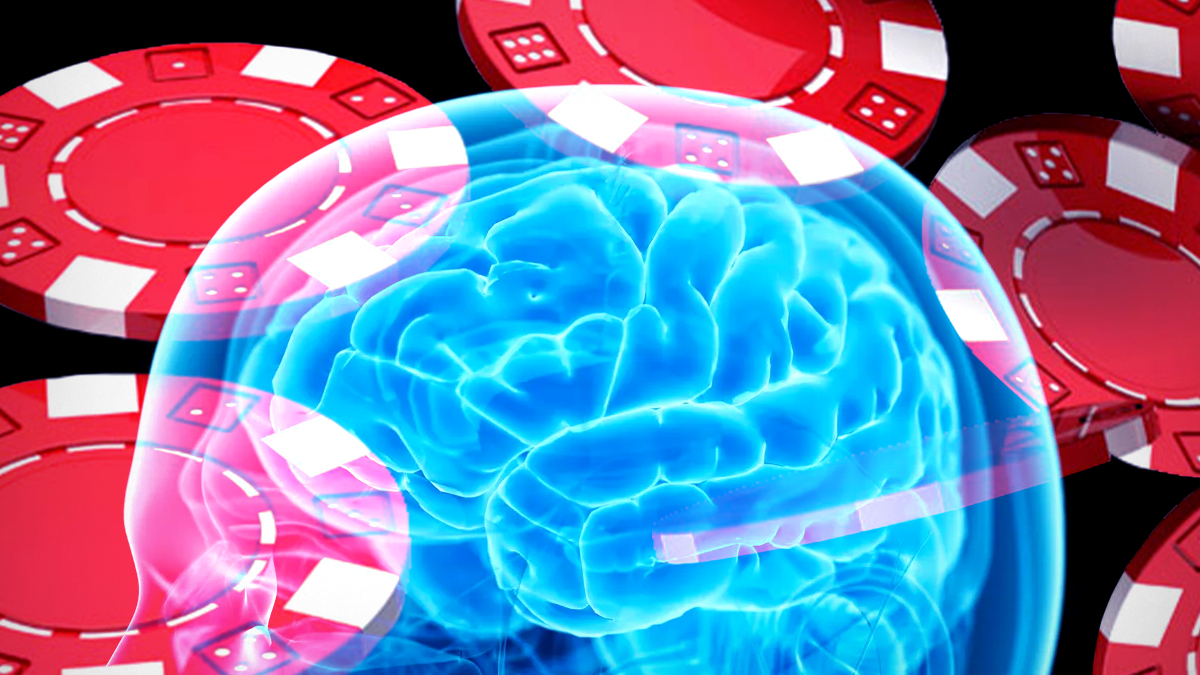Conor Keogh:
It is firstly important to consider that the above figures are not a statistical aberration and aregenerally in line with trends that are being seen all over Europe. Indeed, the ESPAD resultsfound that of all those respondents across the full European sample who had gambled in thelast twelve months, around 5% of respondents met the criteria for problem gambling. This
equates to a rate of around 1.4% across the total sample in Europe. As has been in the case invarious previous research
findings,the ESPAD report alsopoints to a very prominent genderdiscrepancy that exists in respect to problem gambling.
In every country surveyed in theESPAD report, boys were more likely to be problem gamblers than girls (boys had an
average of 29%, compared to 15% amongst girls).
Going back to the Irish context, the 2014 / 2015Drug Prevalence Survey carried out by theNational Advisory Committee on Drugs and Alcohol (NACDA) was amongst the firstprevalence surveys carried out in the country to gauge gambling
behaviours across thepopulation.The report estimated that 0.8% of the male population aged between 15 and 17 fit
the criteria for being problem gamblers (based on the DSM-IV classification framework). Forfemales of the same age bracket, the figure was slightly lower, estimated to be around 0.7%.Overall, male adolescents were more likely to have gambled at least once over the past 12months (29.9%) compared to adolescent females (20.6%).
The recently released ESPAD statistics surrounding underage gambling in Ireland paint ahighly dangerous picture. The
ESPAD survey report (which covers a wide range ofadolescent behaviours including alcohol, drug, and technology use)
suggests that the problemgambling rate amongst Irish adolescent males has in fact risen to 1.7%, compared to the 0.8%
found in the NACDA report. This represents nearly a doubling of problem gamblers amongstthis demographic. 15 – 16-year-old females were estimated to have a lower rate, estimated tobe at around 0.2%. This is in line with the averageacross all age-groups in the female population (0.2%), based on the NACDA 2014/15 study.In line with
the other European states, boys who gambled had a higher problem gamblingrate (7.6%) than the girls who gambled
(2.8%). Of the students who gambled in the last 12months, 26.3% (around 1 in 4) felt they needed to bet and spend more,
and 12.2% (around 1in 10) had lied to those close to them about their gambling behaviours.
IntheUK,weseeasimilarsituation.TheGamblingCommission’s2019reportthat investigatedgamblingbehaviour
amongst11–16-yearoldsfoundthat1.7%ofthisdemographicfitthecriteriaforbeingproblemgamblers.
Intermsoftotalfigures,thismeansthatapproximately55,000childrenareclassifiedasproblemgamblersinEngland,
Scotland,andWales.Inadditiontothis,another2.7%presentedasbeing‘at-risk’gamblers,presenting
withsignsthattheycouldbeatriskofdevelopingamoreseriousproblem.Overall,39%ofthefullcohortofrespondents
aged11–16haveadmittedgamblingwiththeirownmoneyrecently,withthemostpopularformofgamblingbeing
fruitmachinesatarcadesandpubs(incidentally,slotmachinesweretheleastfavouredformofgamblingamongstIrish
adolescentgamblers,accordingtotheESPADdata).
Gamblingamongstadolescents:newformsofgambling
Decadesoftechnologicaladvancehavemeantthatgamblinghasspreadintovariousdiverseformsofmedia,whichhas
meantthatthelineswhichdemarcatewhatexactlyconstitutes“gambling”havebecomeblurryinrecentyears.Such
recenttechnologicaladvancementshavemeantthatgamblingcanbeseeninincreasinglycommonplaces,exposing
childrentoit onaveryregularbasis,viatelevision,mobilephones,andincreasingly,invideogames.Oneofthemost
notableplaceswecanseethisisthroughtheincreasinglypopular“lootboxes”invideogames.Indeed,recentresearch
publishedbyCentralQueenslandUniversityfoundthatofthe82best-sellingvideogamesavailable,62%(51ofthem)
hadlootboxmechanisms inthem.
Forexample,“FIFApacks”(asoneexampleofmanymore)havebeenanotabledemonstrationofthemuddieddefinitional
linesbetweenwhatisaharmless,funfeatureofagame,andwhatisconsideredgambling.Inmanyways,theprocessof
openingapack(oranyothersimilarlootbox)isverymuchpsychologicallyakintoagambleandinvolvesstimulatingthe
braininthesamewaythatanyothergambledoes.AsMacdonald(2018)says;“thedopaminehitisenjoyable,but
potentiallyaddictive,andhardtoresist”.Whilsttechnicallytherewardbeingreceivedbytheplayerisnotphysically
tangible(onemight‘pack’aLionelMessiinFIFA,yetthisMessihaslittletonovalueoutsidethegameworld),the
overarchingmechanismremainsthesame–itisagameofchance,ofriskandreward,andisultimatelypsychologically
akintoreal-lifegamblingthatprovidesa“‘ripebreedingground’forthedevelopmentofproblemgamblingamong
children”(DrummondandSauer,2018).InarecentOireachtasreport,Hurley(2020)mentionsthatatthetimeofwriting,
Irelanddoesnothavea“gamblingregulator,adigitalsafetycommissionoranyotherindependentexpertbodyresponsiblefordeterminingwhetherlootboxesoughttoberegulatedasaformofgambling”andarguesthatthereisa“growing
consensus”thatsuchregulationisrequiredinIrelandtoregulateforsuchpractices.
Formanyadultproblemgamblers,theirfirstexposuretogamblingwasinchildhood.Testimoniesfromgamblerstellus
thatthisfirstexposurecanrangefromanythinglikebuyingascratchcard,bettingontheGrandNational,sneakingintoa
casino,orperhapsplayingcardswithfriends.Now,thenumberofopportunitiesavailabletowould-beadolescent
gamblersisenormous.This,combinedwithavery-liberalapproachtogamblingadvertisement(noticeablyduring
livesports),aprominent“gamblingculture”,andtheemergenceandpopularisationofgambling-simulatortypepractices
inmorecommonformsofmedia(suchasvideogames),hasledtoasituationwherechildrenandadolescentshavebecomeatgreatrisktotheharmsassociatedwithgambling,andtherecentESPADstatisticsareadistincttestamenttothis.
Problem gambling comes with a devastating personal, economic, psychological, and socialcost. The figures that we see
here from ESPAD are a result of an industry that has beencontinually under-legislated for in Ireland, and are a stark
indictment of the Government’sfailure to implement any meaningful legislation or solutions in order to counterbalance
thedevastating personal, financial and social cost of a gambling addiction. They also act as atimely reminder (and warning) that not enough has been done to protect children andadolescents from the harm associated with gambling, and that
there is an urgent need for thedevelopment and implementation of proper channels of gambling prevention education,
support, and treatment in Ireland, along with re-emphasising the urgent need foracross-the-board legislation.
The Problem with Youth Gambling Youth are at a stage of human development when their brain is growing and maturing at an Read more » Support at a Distance Posted On May 1, 2020. Problem gambling can affect families in so many ways. Supporting a loved one is difficult, but distance from one another can make it much harder. Even with distance. The major mental and emotional health issues driving gambling addiction are Depression, Anxiety, and Low Self-Esteem. Address these core issues and recover. An addiction to gambling can happen to anyone, anywhere, at any point in time. People can feel more comfortable seeking help once we all have a more honest conversation about problem gambling. Until that happens though, gambling addiction misdiagnosis will continue to damage people’s chance of recovery.
According to The National Gambling Impact Study Commission (NGISC) “gambling addiction affects approximately 2 to 5 percent of Americans.” People who gamble continue to do so despite of financial hardship or legal consequences. The brain of a gambler who is addicted responds in the same way the alcoholic brain responds to a drink. In other words, the more you feed your addiction, the more it will grow. “Pathological gambling is recognized as a medical disorder by the American Psychiatric Association and has elements of addiction similar to alcohol and drug addiction. It describes a gambler who loses control over gambling behavior with damaging personal, social and financial effects. Very often, the pathological gambler suffers from legal problems. Because the gambler is losing control it is referred to by mental health practitioners as an impulse disorder. Pathological gambling is a progressive disease, meaning that the symptoms will get worse over time” (www.library.ca.gov). Impulsivity is an aspect of a person’s personality. People who are impulsive are more prone to gambling because of their personality. The impulse to gamble cannot be controlled. Not all impulsive people will develop gambling problems.

Gambling can be considered a hidden illness because there are no physical signs like alcohol addiction or drug addiction. Gamblers usually deny their problems and hide their addiction.
Some of the symptoms are:
Problem Gambling Blogs In America
- taking gambling risks
- preoccupation with gambling
- the need to hide gambling
- stealing money to gamble
- gambling as a way to escape problems
- taking time away from family life in order to gamble
- denying gambling tendencies
Gambling becomes worse over time. People may make efforts to stop gambling, but fail to do so. Gamblers continue to bet or play in order to win back the money they lost. This can become very destructive which leads to debt, bankruptcy, divorce, failed relationships. Some people may gamble as a way to escape or numb their feelings and find ways to continue their addiction by lying or stealing money. Unpleasant feelings such as depression, anxiety, fear, etc may make gambling worse. Going to a casino may seem like a fun way to socialize and de-stress, but there are other healthier ways to positively cope with unpleasant feelings.
Problem Gambling Blogs Gambling
Treatment:
Recovery from gambling addiction is possible. Treatment should be tailored to the individual because every person is different. The first step is to admit that you have a problem with gambling and that you actually want to change. Cognitive behavior therapy (CBT) helps to change your unhealthy thoughts and false beliefs. It also teaches gamblers to fight urges, deal with uncomfortable emotions, and solve financial problems caused by the addiction.
The following below is taken from helpguide.org. As you receive CBT to change unhealthy thoughts and behaviors, try using these alternative behaviors to substitute for gambling:
Reason for Gambling: To provide excitement, get a rush of adrenaline
Sample Substitute Behaviors: Sport or a challenging hobby, such as mountain biking, rock climbing, or Go Kart racing
Reason for Gambling: To be more social, overcome shyness or isolation
Sample Substitute Behaviors: Counseling, enroll in a public speaking class, join a social group, connect with family and friends, volunteer, find new friends
Reason for Gambling: To numb unpleasant feelings, not think about problems
Sample Substitute Behaviors: Therapy, consult Helpguide’s Bring Your Life into Balance toolkit
Reason for Gambling: Boredom or loneliness

Sample Substitute Behaviors: Find something you’re passionate about such as art, music, sports, or books then find others with the same interests
Reason for Gambling: To relax after a stressful day
Sample Substitute Behaviors: As little as 15 minutes of daily exercise can relieve stress. Or deep breathing, meditation, or massage

Reason for Gambling: To solve money problems

Sample Substitute Behaviors: The odds are always stacked against you so it’s far better to seek help with debts from a credit counselor
Getting treatment at the earliest sign of a gambling problem is the first step to preventing the addiction from getting worse. Whether it is individual therapy, group therapy or joining gamblers anonymous is the first step to recovery. In order to receive the best treatment, make sure that the person you work with has expertise in gambling.